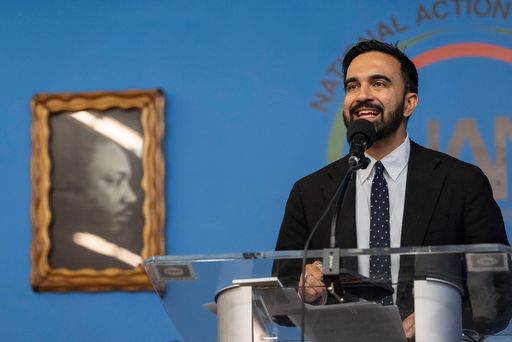On July 3, The New York Times published what appeared to be a straightforward political expose. But by sunset, it had become the centre of a storm, not around its subject, Zohran Mamdani, but around The Times itself.
The controversial article focused on a detail from Mamdani's past: a college application he submitted in 2009 to Columbia University. Then 17, Mamdani, had checked two racial identity boxes — "Asian" and "Black or African American." He wasn't admitted to Columbia.
The Times positioned this disclosure as potentially significant, noting that Mamdani identifies as an Indian Ugandan-American today, but not as Black.
Ordinarily, the story might have quietly faded into the news cycle, but the context in which it was published has triggered a backlash that continues to trend on social media in the US.
Mamdani, 33, is currently the Democratic nominee for mayor of New York City and a sitting assemblyman from Queens. He was born in Uganda to South Asian parents and moved to New York at age seven.
He became a US citizen in 2018. As a Muslim, democratic socialist, Mamdani has disrupted the traditional political power centres of the city.
The NYT article was framed as a factual look at his past — a "routine" piece of political scrutiny. But critics swiftly pointed out that the detail it focused on was sourced from a cache of hacked Columbia University admissions documents.
Those documents had been leaked to The Times by an anonymous source described only as "an academic critic of affirmative action."
Within 24 hours of publication, that source was identified publicly.
Cremieux, as he was referred to in the article, was revealed by The Guardian to be Jordan Lasker, a Substack writer known for defending race science and promoting views linking race and intelligence.
Lasker's writings frequently cite studies that argue for racial hierarchies in IQ, and he has aligned himself with the far-right online ecosystem.
A 'vile' piece
"Why would you promise him anonymity, especially when his views are already in the public record?" asked Jane Kirtley, a professor of media ethics at the University of Minnesota, speaking to the Columbia Journalism Review (CJR).
"There's an element of manipulation here, and The Times should've seen it coming."
Critics saw NYT's decision to publish the piece as not only ethically questionable but also politically motivated.
The paper's editorial board, which no longer endorses local races, had earlier issued a scathing editorial about Mamdani's mayoral run, effectively urging voters not to support him.
The publication of the college application story, just weeks before the Democratic primary, was widely interpreted as a coordinated effort to undermine a leading candidate the establishment fears.
Public figures were swift to respond. American political commentator and writer Keith Olbermann called the piece "vile."
Other noted media voices on X and Reddit accused The Times of laundering racist pseudoscience in the service of political smear.
The phrase "NYT smear" trended on X for three days.
Even inside The Times, there was dissent.
Jamelle Bouie, a much-respected columnist at the paper, posted criticisms of the piece before deleting them, reportedly under pressure due to the paper's social media rules.
The backlash spilled over into Mamdani's campaign. But not in the way The Times may have anticipated.
Donations surged, campaign organisers said. Small-dollar contributions spiked by over 20 percent in the three days after publication. Volunteers signed up at higher rates.
Internal polling, shared with reporters, showed an uptick in support among young voters and among African and South Asian diaspora communities.
In several interviews with local press, voters described The Times article as "a distraction," "desperate," and "a reminder of who gets to control the narrative."
"I don't have a problem with how he self-identifies," Curtis Sliwa, the Republican candidate for mayor running against Mamdani, told Fox News.

No substance
Mamdani himself said, "I checked multiple boxes trying to capture the fullness of my background. Even though these boxes are constraining, I wanted my college application to reflect who I was."
Critics say the real question is not about racial categories on a college form, but about power: who is allowed to navigate American identity with complexity, and who is punished for it.
For many, the story backfired not just because it lacked substance, but because it laid bare how legacy media still struggles to cover candidates who don’t fit the mould of traditional politics.
Rather than paint Mamdani as dishonest, it reinforced his image as a target of elite discomfort — and helped galvanise his base.
In defending the piece, Patrick Healy, assistant managing editor for Standards and Trust at The Times, insisted the story was newsworthy.
"What matters most here is whether the information was true and factual — it was, confirmed by Mr Mamdani; that it was independently confirmed; and that it is relevant to the public," he told CJR.
But that defence has done little to slow the erosion of trust among The Times' younger and more progressive readers.
As the reader backlash thundered on, The Times quietly shuttered the comments section on the Mamdani piece — a silent concession that the storm wasn't passing.
The hit job by the NYT has exposed fault lines in the media ecosystem and how mainstream American journalism navigates the terrain between fact and fairness.
As Kirtley put it, "You don't protect a source just because they handed you a document. You have to think about why they handed it to you in the first place."



















